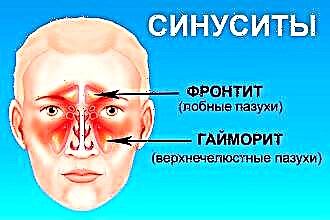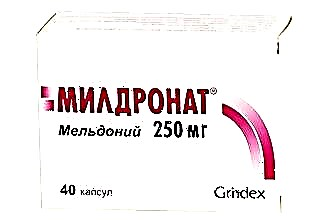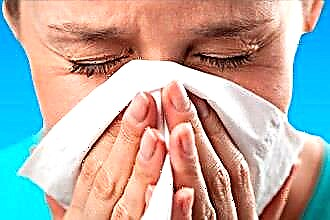Causes
 There are many reasons for nasal pain. Often, painful sensations appear against the background of rhinitis, however, pain in the nose is insignificant. If there are other disorders, in the form of injuries or boils, then the patient is worried about very severe pain, localized outside and inside the nose. To prescribe the correct treatment, it is necessary to determine the cause of the pain. It is impossible to independently inspect the inside of the nose, so you should immediately seek help from a specialist.
There are many reasons for nasal pain. Often, painful sensations appear against the background of rhinitis, however, pain in the nose is insignificant. If there are other disorders, in the form of injuries or boils, then the patient is worried about very severe pain, localized outside and inside the nose. To prescribe the correct treatment, it is necessary to determine the cause of the pain. It is impossible to independently inspect the inside of the nose, so you should immediately seek help from a specialist.
Rhinitis
Often it is a prolonged runny nose that becomes the reason why the nose hurts inside. There are several types of rhinitis:
- Rhinitis caused by exposure to viruses or bacteria. In this case, pain inside the nose is accompanied by swelling, congestion, as well as the accumulation of a large amount of mucous secretion, sneezing, and fever.
When the mucus becomes more viscous, the process of cleansing the nasal passages becomes more complicated, when blowing out, the mucous membrane is injured, cracks appear, which causes increased pain.
- Allergic rhinitis. Such a runny nose is most often accompanied by swelling of the nasopharyngeal mucosa, itching, burning, sneezing, headache, which provokes increased pain. Dusty air, plants, animal dander most often act as an allergen.
- Hypertrophic rhinitis is also accompanied by pain in the nasal cavity. Pain in the nose occurs due to the proliferation of mucous membranes, constant congestion, the appearance of microcracks, which can provoke nosebleeds.
Also, in the presence of this form of rhinitis, there is a deterioration of smell, soreness when blowing out, dryness in the nasopharynx. The cause of a hypertrophic rhinitis is a prolonged stay in a dusty room, chronic diseases of the nasopharynx, the use of vasoconstrictor drops longer than the indicated period, curvature of the septum in the nose, adenoids.
Sinusitis
With sinusitis, inflammation of the paranasal sinuses of the nasopharynx is observed, accompanied by swelling and the accumulation of a large amount of viscous, difficult to remove secretion. As a result, excess mucus creates additional pressure inside the nose and sinuses, there is a bursting pain that affects the frontal part of the face, temples, and the bridge of the nose. The pain is more pronounced at night and after waking up.
Along with medication and physical therapy, it is important to regularly cleanse the nasal passages, which helps to reduce the discomfort by relieving pressure in the nose.
Herpes
The herpes virus is often the cause of the blisters, which are usually located on the mucous membranes and skin. These vesicles can be localized on the inner surface of various parts of the nasal cavity, most often affecting the wings of the nose. In this case, the pain is accompanied by symptoms such as itching, burning. The visible manifestations of herpes are a sign of a recurrent infection, while first of all, when the virus enters the body, the tissue of the nasal cavity is damaged. In this case, soreness in the nose persists until the visible manifestations of herpes infection completely disappear.
Purulent inflammation
Due to a sharp decrease in immunity or as complications of other diseases, purulent inflammation (boil or abscess) may occur in the nose. Furunculosis is a bacterial inflammation of a hair follicle or sebaceous gland. The cause of the inflammatory process is most often staphylococcus, which enters the body through damage in the skin. Hypothermia, the presence of chronic diseases and unhealthy diet significantly increase the risk of purulent inflammation in the nasal cavity.
The inflammation is accompanied by:
- accumulation of pus;
- an increase in temperature;
- rapid fatigue;
- general weakness.
Important! It is forbidden to self-squeeze the boil, as this can provoke the spread of infection to neighboring organs and tissues.
In the treatment of furunculosis, pain gradually subsides, but can persist until the skin is completely healed. An abscess is dangerous with complications, since purulent inflammation can spread to nearby parts of the brain.
Neoplasms
On the inside of the nose, benign or malignant neoplasms can appear. A cyst forms on the nasal mucosa, the presence and intensive growth of which is the cause of pain resulting from compression of the nerve endings.
In the presence of neoplasms, their suppuration may occur, which is also the cause of pain in the nasal cavity.
If the neoplasm is malignant, then in the early stages of development, pain is practically absent and can intensify as the disease progresses.
In the case of neoplasms, soreness of the nose will also be accompanied by a large amount of purulent secretion from the affected nostril, nasal congestion, lack of ability to perceive odors, and pain in the ears.
Trauma
If the wing of the nose, the bridge of the nose and the tip hurts, then most likely the pain symptom was preceded by a blow. In this case, it is necessary to consult a doctor to rule out the presence of fractures or displacement of the nasal septum. Pain can also be caused by the presence of a foreign object in the nasal passage, burns and frostbite. An unpleasant symptom is acute, most often aggravated by touching or pressing. The duration of pain in the nose will depend on the severity of the injury: the presence of fractures, the degree of damage to the mucous membrane or skin, the need for surgery.
Neuralgia
Pain in the nasal cavity occurs as a result of inflammation affecting the nerves of the facial part of the skull (nasal, trigeminal nerves). The pain most often has a paroxysmal character and intensifies at night. In this case, the unpleasant symptom is localized not only in the nose, but can also be accompanied by acute pains in the forehead, eyes, jaw and even hands. At the same time, soreness is not accompanied by a runny nose, and patients complain of a temporary inability to distinguish odors. The cause of trigeminal neuralgia is various facial injuries, complications as a result of diseases of the nasopharynx, diseases of the oral cavity (pulpitis), a sharp decrease in immunity.
Establishing diagnosis
If painful sensations appear in the nasal cavity, it is necessary to consult an otolaryngologist or surgeon (if it is known that the pain is caused by trauma). In order to make the correct diagnosis, the doctor will interview the patient, collect his anamnesis, and examine the nasal cavity using a rhinoscope. If the doctor has doubts, additional diagnostic procedures such as:
- X-ray (helps to identify violations associated with fractures or displacement of the nasal septum);
- endoscopy (diagnostics of the condition of the nasal cavity);
- computed tomography (allows for a layer-by-layer examination of the tissues of the nasal cavity);
- Magnetic resonance imaging;
- ultrasound procedure;
- biopsy and bacteriological analysis of mucous secretions.
Treatment
 After it has been possible to establish the cause, the specialist decides on what to do if the nose hurts, and how to treat the unpleasant symptom. After all, correct and timely treatment reduces the likelihood of complications and the transition of the disease into a chronic form.
After it has been possible to establish the cause, the specialist decides on what to do if the nose hurts, and how to treat the unpleasant symptom. After all, correct and timely treatment reduces the likelihood of complications and the transition of the disease into a chronic form.
- If the soreness of the nose is caused by rhinitis, then in this case, the therapy must first of all be directed at eliminating the cause that caused the runny nose.
In the treatment of a runny nose caused by exposure to viruses or bacteria, antiviral drugs (Arbidol, Anaferon, Rimantadin) and antibacterial agents (Augmentin, Azithromycin) are used.
For the treatment of allergic rhinitis, antihistamines are used (Suprastin, Loratadin, Zodak).
To prevent rhinitis and speed up the healing process, use saline drops and sprays (Aquamaris, Nosol, saline), which prevent the nasopharyngeal mucosa from drying out.
To accelerate the healing of cracks, wound-healing ointments are used (Methyluracil, Solcoseryl, Radevit).
- Pain in the nasal cavity caused by the herpes virus should be treated with Acyclovir, while using wound healing ointments.
- Wound healing creams and ointments based on panthenol, as well as remedies for bruises (heparin ointment), help to remove soreness in the nose in situations where the symptom is caused by trauma.
- With furunculosis, warm compresses, Vishnevsky's ointment, laser and ultraviolet irradiation are used for a speedy recovery.
Along with the main therapy, pain relievers are used as symptomatic treatment, such as Analgin, Paracetomol, Ibuprofen, etc.
If your nose hurts, it is necessary to determine the cause of the symptom as soon as possible and find an effective treatment that will help you quickly cope with the disease. After all, pain in the nasal cavity may indicate the presence of dangerous diseases, as well as deviations fraught with the development of serious complications.



